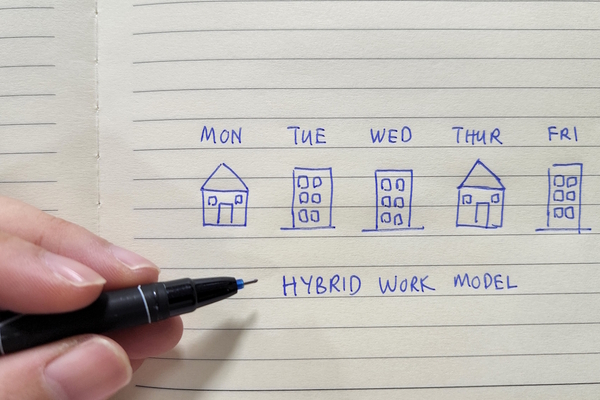Optimising online government services

Jenn Markey at Entrust lays out a roadmap to improving government-citizen digital interactions
In today’s tech-driven era, we are witnessing a surge in government investments and initiatives geared towards enhancing technology capabilities.
The UK government’s recent £2.5 billion grant for quantum computing and its ambitions to become a global AI leader are just two examples out of many. While these strides in innovation are laudable, are they being reflected in the digital services that we, the ordinary citizens, use on a day-to-day basis?
Are the interactions between the government and its citizens keeping pace with the rapid evolution of the tech landscape?
In a world where citizens are increasingly reliant on technology, and where private sector businesses deliver services with astonishing speed and efficiency, expectations have shifted dramatically. Many now expect similar levels of convenience, speed and simplicity in their dealings with the public sector.
However, recent research presents a sobering picture: only half of citizens globally report having a positive experience with digital public services, and almost one in five believe that services have stagnated since the pandemic.
So, what strategies can global governments implement to evolve their digital services from rigid bureaucratic systems to enjoyable and effective digital experiences?
The challenges to overcome
What are citizens’ biggest pain points with government tech today? The usual suspects - outdated systems and complexities introduced by multiple solution providers—are all playing a role.
However, most pressing of all is convenience. 67% of citizens report lengthy wait times as their number one issue with government digital services, followed by unclear instructions (32%), and inconsistent service levels (30%). While there are a whole host of improvements that citizens desire, above all they want clear, easy-to-use services.
Understanding these pain points allows us to envision ways in which governments can bridge the gap. For instance, governments could adopt a more user-centred design for their digital services, prioritising factors such as convenience, secure and easy methods of identity verification, and data privacy. Citizens want access to services when and where they need them, without encountering extended wait times.
Similarly, identity verification methods need to be robust yet easy to use. In the modern age, catering to individual preferences is essential - some may prefer digital biometrics, while others may opt for in-person verification. Offering flexible solutions will undoubtedly enhance user experience.
Data privacy is another critical aspect. With the rise of cyberattacks in both public and private sectors, citizens need assurance that their data is secure. By prioritising data privacy, governments can build trust with their citizens, which is crucial for successful digital engagement.
Moreover, to further improve the digital user experience, governments can consider including other valued features such as the ability to track progress, self-service capabilities, and online forms. A consistent user experience across government organisations would also be greatly appreciated by the public.
Finally, governments should establish mechanisms for continuous feedback from citizens. This iterative process will facilitate swift identification and correction of any glitches or shortcomings. Many digital transformation efforts in the private sector owe their success to robust customer feedback loops.
Governments, too, need to integrate this into their digital strategies. Regular engagement promotes trust and transparency, integral to a positive digital interaction. This kind of co-creation fosters a sense of ownership among users and ensures services are designed with user needs at the core. When citizens feel they are part of the journey, they are more likely to embrace the final product.
The path forward
Despite the significant strides that have been made in digitalisation since the pandemic, research shows that the journey is far from complete. Governments worldwide need to strive to provide a thoughtful, unified approach to digital interactions and transactions. Only then can they align their services with the rising expectations of their citizens and position themselves as modern, global leaders in the digital age.
Encouragingly, willingness to improve is already visible. For instance, the UK government is currently ramping up its GOV.UK One Login programme, a single digital identity which it hopes citizens will be able to use across all public services.
So far, One Login has been adopted by 1.5 million people and is operational across eight government services. The Cabinet Office hopes to extend this to more than 100 services in the next two years, ultimately replacing the existing 191 methods for setting up accounts and 44 sign-in methods for services accessed via the GOV.UK portal.
However, while these developments are promising, there is still much work to be done. The roadmap to an optimal digital experience is becoming increasingly clear: we need more user-friendly, secure, and convenient digital services that reflect the evolving needs and expectations of citizens.
By meeting citizens where they are and focusing on these elements, governments can truly revolutionise their digital services and build a world-leading digital function.
Jenn Markey is Vice President of Identity at Entrust
Main image courtesy of iStockPhoto.com

Business Reporter Team
Most Viewed
23-29 Hendon Lane, London, N3 1RT
23-29 Hendon Lane, London, N3 1RT
020 8349 4363
© 2024, Lyonsdown Limited. Business Reporter® is a registered trademark of Lyonsdown Ltd. VAT registration number: 830519543





